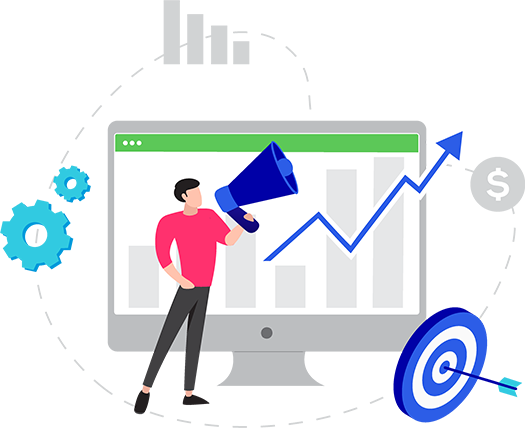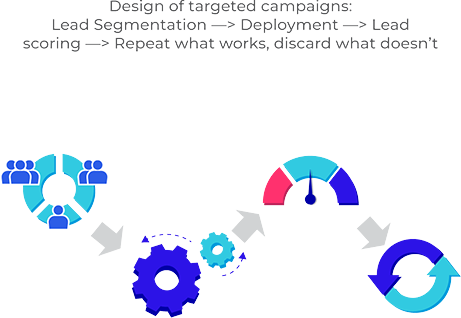New Ways To Attract Qualified Leads
Generating the most leads means always coming up with new ways to attract customers.

Generating the most leads means always coming up with new ways to attract customers. There are many strategies to accomplish this, from generating a high number of new landing pages, squeeze pages, and sales pages. In order to conduct top-notch lead generation, it is necessary to track user engagement on a website.
By using semantic modeling and machine learning, a lead gen platform can get smarter with each interaction. This enables the system to construct dialog flows on the fly, adjusting each approach as the occasion warrants. The system can also pinpoint the optimal time to deploy hyper-targeted lead gen campaigns; and respond to key developments in real time. The idea is to understand behavioral patterns; and formulate optimal outreach strategies at lightning speed.
When it comes to lead generation, bear in mind that there are numerous functions that can be carried out by bots. By asking a set of pre-programmed questions, a chatbot can determine whether or not a prospect is interested, thus passing only the best targets on to sales agents. This prevents staff from squandering time on unlikely shoppers.
Operations like this can now make use of NLP (natural language processing) technology, which is capable of generating meaningful conversations. To begin with, it is necessary to set up data-driven, automated e-mail campaigns. Such campaigns are targeted based on customer behavior. The system uses machine learning to discern underlying patterns in order history, user interest, and browsing habits; and thereby creates personalized e-mails.
Segmentation is key when it comes to savvy targeting. This means creating multiple lists of leads according to profile types, so that certain groups of people can be targeted with approaches that cater to their interests. Also note that timing is everything when it comes to surveying content and get in front of prospects.

Well-timed, personalized emails can be deployed based on the occurrence of predetermined “trigger events” (signing up for a membership, cart abandonment, or unsubscribing). With optimized subject lines and content, automated e-mail campaigns have a much higher open rate and better selected mailing times—for example: when leads are more likely to check their mail; or when leads are more likely to want a certain kind of deal. And since it is based on past online activity, it can figure out the best way to target certain shoppers.
But a large lead database is useless without an effective routine of lead scoring. LeadMachine.AI’s prodigious analytical capabilities enable the system to quickly review data and automatically deliver targeted offers to the right audiences at the right time. Such a system can glean insights from accumulated experiences; and find ideal customer profiles that match their niche markets.
Equipped with machine-learning capabilities, a lead gen system can learn—and thus improve—over time. It can thereby find more leads based on what is known about current leads. The goal is to boost traffic while reducing the time and costs that are typically involved in outreach across all social media channels.

With the right tech, it is possible to make accurate predictions regarding who in the data-set is an ideal lead, as well as which leads are most likely to translate to a sale. Other insights can be gleaned, such as what sort of content resonates most; and what next actions are best to take in order to convert any given lead. The competitive advantage afforded by the groundbreaking lead gen tech is indispensable in the increasingly competitive online ecosystem.
What sets LeadMachine.AI apart from other lead gen technology is its uncanny ability to identify leads and opportunities, using available data. After harvesting relevant data, it weighs it against other databases to find more people that resemble the most probable leads. Using past instances, sophisticated modeling makes it possible to determine the likelihood of a target opening an email. Such a feat demands the ability to analyze the past behavior of targeted prospects. This requires combing through massive data-sets to identify patterns that humans might not notice; and find mentions across multiple touch-points. Companies can then ascertain which leads to focus on most.
It is also important for a system to provide verified e-mail addresses for prospects at each company, creating a contact list. For example, Lead Forensics is an online service for acquiring contact details of people who have downloaded your lead magnets or visited your website. Such information can be used to connect with and engage with those potential customers.

Lead generation is all about helping companies connect with the right customers at the right time. When the curation of contact information is automated, the process is made faster and less costly. There is a vast array of tools that enable companies to keep pace with fluctuating market conditions; and respond to developing trends. Again, this requires the ability to work from a cache of data culled from a gigantic reservoir of individual customer profiles, culled from past online activity (habits, preferences, etc.) The system can then generate a list of specific clients that have the highest probability for conversion.
Subscribe to our newsletter to learn more about LeadMachine.
$49.95/per month
(pay nothing for 14days)